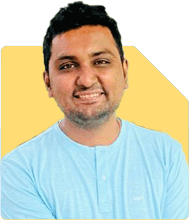Hi I am 45 year old. I want retire from services at 49 years. My current salary is Rs.1.9 lakhs per month. I have rental income of Rs.55k. I have total housing loan outstanding balance is Rs.71 lakhs. I have invested in two 3bhk flats, 2 villa plots, 2 open plots and two plots under instalment which not yet handed over. I have total gold of 1.4 kg and total debt of Rs.1.5 crs including housing loan.
Kindly suggest me plan for retirement
Ans: You are 45 years old and planning to retire by 49. You have a strong salary of Rs.?1.9?lakh monthly and rental income of Rs.?55?k. But you also carry housing debt of Rs.?71?lakh and total debt of Rs.?1.5?crore. You hold multiple residential properties, plots, and gold of 1.4?kg. This complex financial landscape needs methodical and balanced planning. Let us begin a 360-degree strategy to help you retire confidently in four years, with clear steps and directions.
? Clarify Your Retirement Vision
– First, define your desired lifestyle post-retirement.
– Higher loan burden means pre-retirement cash flow is key.
– Decide the monthly income you need at age 49.
– Consider inflation, medical costs, lifestyle, travel, hobbies.
– Set a target corpus – likely several crores to support lifestyle.
– Having clarity here helps shape the investment plan.
? Analyse Your Debt Position
– Housing loan is Rs.?71?lakh.
– Total debt is Rs.?1.5?crore including housing.
– Likely high interest cost is eating your future savings.
– Accelerate repayment of high-interest loans first.
– You may consider prepayment of the housing loan.
– This will reduce interest and improve your monthly surplus.
– Plot and villa plots may have instalments – clarify interest and penalties.
– Plan to clear debt systematically before retirement.
– Less debt means less financial pressure post-retirement.
? Evaluate Your Real Estate Portfolio
– You own two flats, two villa plots, two open plots, two under-construction plots.
– Many real estate assets breed maintenance, tax, and liquidity issues.
– As per instruction, we won’t recommend real estate as growth vehicles.
– You may consider trimming or repurposing some holdings.
– Rental flattened is Rs.?55?k – fair, but not enough to replace your salary.
– To build retirement corpus, you may need to monetize some plots.
– The funds freed can move to financial instruments offering better returns and liquidity.
– This shift also reduces your exposure to cyclical property risk.
? Liquidate or Reallocate Excess Property
– Identify properties you can sell without harming your lifestyle.
– Consider tax implications – long-term capital gains need planning.
– Proceeds can repay high-interest debt.
– After loan clearance, surplus can go into mutual funds and safe instruments.
– You still keep at least one flat to generate rental income post-retirement.
– Balance between income-generating assets and capital growth assets.
? Gold Holding Review
– Holding 1.4?kg of gold is substantial.
– Gold gives low yield and high volatility.
– Gold can act as an inflation hedge but not a wealth creator.
– Keep gold within 5–10% of your total net worth.
– Consider gradual reduction of gold holdings.
– Proceeds can be shifted to financial investments.
– This improves return potential and diversification.
? Emergency Fund Maintenance
– You must maintain at least 6–12 months’ expenses in liquid format.
– Keep funds in a combination of savings account and liquid mutual funds.
– This fund will not be touched except for true emergencies.
– Even after debt clearance, maintain this buffer to avoid new debt.
– It is your first defence post-retirement.
? Insurance and Risk Protection
– Term insurance and health insurance status needs review.
– Based on your salary and dependents, term coverage of Rs.?2–3?crore is advisable.
– Make sure policies have suitable riders or top-up.
– Ensure health coverage includes serious illness and critical care.
– If not, buy a top-up policy now, before retirement.
– Insurances form the backbone of financial security.
? ULIPs and Traditional Insurance Policies
– If you hold ULIPs or endowment plans, these usually blend insurance and investment.
– Their cost structure erodes returns.
– For retirement corpus, they are inefficient and offer little flexibility.
– Consider surrendering such policies now.
– This decision should align with lock-in and surrender charges.
– If investment part is small, explore stopping future premiums instead.
– These funds can be reallocated to mutual funds for transparency and growth.
? Mutual Fund Portfolio Restructuring
– You invest in mutual funds across categories including index funds.
– Index funds passively track the market and carry both good and bad stocks.
– They offer no protection during downturns.
– Actively managed funds, on the other hand, can exit poor sectors.
– They rebalance based on research and risk controls.
– Replace index fund allocation gradually with quality active equity funds.
– Choose from large-cap, mid-cap, multi-cap, and hybrid funds.
– Maintain debt allocation to match risk and liquidity needs.
– Enable balanced growth with downside protection.
? Direct Mutual Funds vs Regular Plans
– Direct funds look cheaper but have no advisory support.
– They expose you to poor decisions and panic exits.
– Regular plans include advice and review, helping you stay committed.
– Behavioral discipline beats small cost savings over decades.
– Continue investing through regular plans via MFD and a Certified Financial Planner.
? Structured SIP Increases
– You are currently investing Rs.?42?k SIP + wife's Rs.?15?k SIP.
– Post loan repayment, redirect EMI savings into SIPs.
– Increase SIP systematically – e.g., raise every year by 10%.
– This builds a growing compounding base.
– It also prepares you to shift from income to corpus creation.
? Asset Allocation for Retirement
– Goal is to retire in 4 years with sufficient corpus to support your lifestyle.
– Until retirement, higher equity exposure is needed for growth.
– Suggested portfolio: 60–70% equity (active), 20–30% debt/hybrid, 10% gold/liquid.
– Post-retirement, shift gradually towards debt and hybrid to reduce volatility.
– Use SWP (Systematic Withdrawal Plan) from these funds to meet monthly expenses.
? Systematic Withdrawal Plan Post-Retirement
– After retirement, do not liquidate entire corpus.
– Instead, use SWP from hybrid funds to receive monthly income.
– Keep the rest of the corpus invested for growth and inflation protection.
– This method offers flexibility and tax efficiency compared to FDs or annuities.
? Tax Efficiency and Capital Gains
– Equity mutual fund gains above Rs.?1.25?lakh per year are taxed at 12.5% LTCG.
– STCG (under 1 year) is taxed at 20%.
– Debt fund gains are taxed as per your slab rate.
– Use long-term holding and SWP to optimize tax.
– Other tax-saving strategies include ELSS under 80C – but remember the trade-off with lock-in.
– Your planner can guide you on yearly withdrawal thresholds to reduce tax impact.
? Retirement Corpus Estimation
– To generate Rs.?1.9?lakh salary + Rs.?0.55?lakh rent= Rs.?2.45?lakh.
– Post-retirement, aim for Rs.?2.5?lakh monthly income after inflation.
– Annually this is Rs.?30 lakh.
– A safe withdrawal rate of 4–5% suggests a corpus of Rs.?6–7.5?crore.
– Add buffer for inflation, medical costs, and rising standards.
– Achieving this in 4 years needs a sharp increase in net investable surpluses.
– Your asset monetisation and debt reduction will help free resources.
– Continue aggressive SIP increases and disciplined investing.
? Retirement Timeline Action Plan
Year 1 (Now):
– Finalise retirement income target.
– Surrender ULIPs/traditional policies where sensible.
– Start gradual shift from index to active funds.
– Build emergency fund and reassess insurance as needed.
– Increase SIP usage with upcoming EMI surplus.
Year 2:
– Monitor fund performance every 6 months.
– Reallocate funds as necessary.
– Explore selling one plot if monthly funding is still needed.
– Continue boosting equity exposure.
Year 3:
– Finalise assets to be retained post-retirement.
– Consider rent agreements, rental property income mapping.
– Plan tax strategies for plot sales and corpus creation.
– Shift some debt funds to hybrid for less volatility.
Year 4 (Retirement Year):
– Prepare SWP structure and withdrawal schedule.
– Set up bank Auto-SWP to fund monthly expenses.
– Finalise insurance renewals.
– Freeze long-term portfolio allocations.
– Transition from accumulation to income mode.
? Non-Financial Retirement Planning
– Retirement is more than money.
– Prepare mentally for lifestyle change.
– Plan for purpose: hobbies, family time, travel, community.
– Identify roles you may take – advisor, mentor, freelancer.
– Ensure your health stays fit for retirement life.
– Village living gives low cost but health costs can rise.
– Create a weekly schedule and goals post-retirement.
– This mental planning complements your financial plan.
? Regular Monitoring and Advisory Support
– You have a complex financial situation.
– Engaging a Certified Financial Planner and MFD is key.
– They guide fund selection, tax planning, behaviour.
– Meetings every 6 months will keep your plan on track.
– This support helps you avoid emotional mistakes like panic selling.
? Final Insights
You are in a strong position with high income and rental flow.
But debt and real estate concentration must be managed.
Monetise non-income properties to reduce liabilities and increase investment.
Surrender inefficient insurance products and re-channel capital.
Maintain robust insurance and emergency funds.
Boost mutual fund SIPs post-debt clearance.
Replace index funds with quality active ones.
Plan SWP for monthly income post-retirement.
Continue annual reviews and behaviour support.
With dedication and systematic action, your retirement at 49 is achievable and secure.
Best Regards,
K. Ramalingam, MBA, CFP,
Chief Financial Planner,
www.holisticinvestment.in
https://www.youtube.com/@HolisticInvestment

























